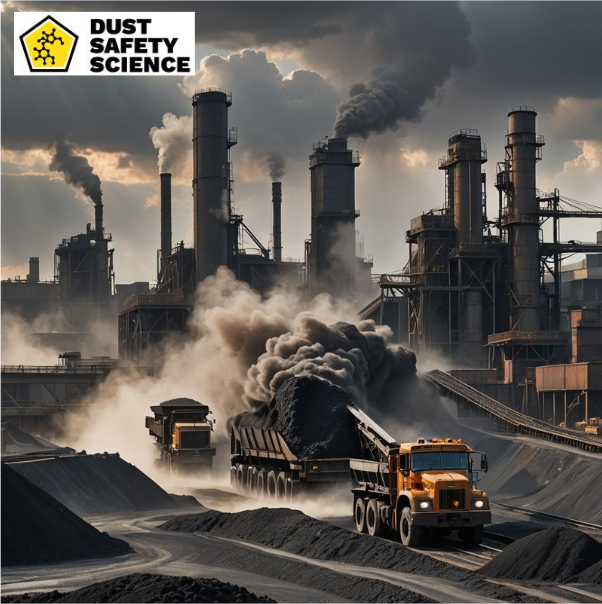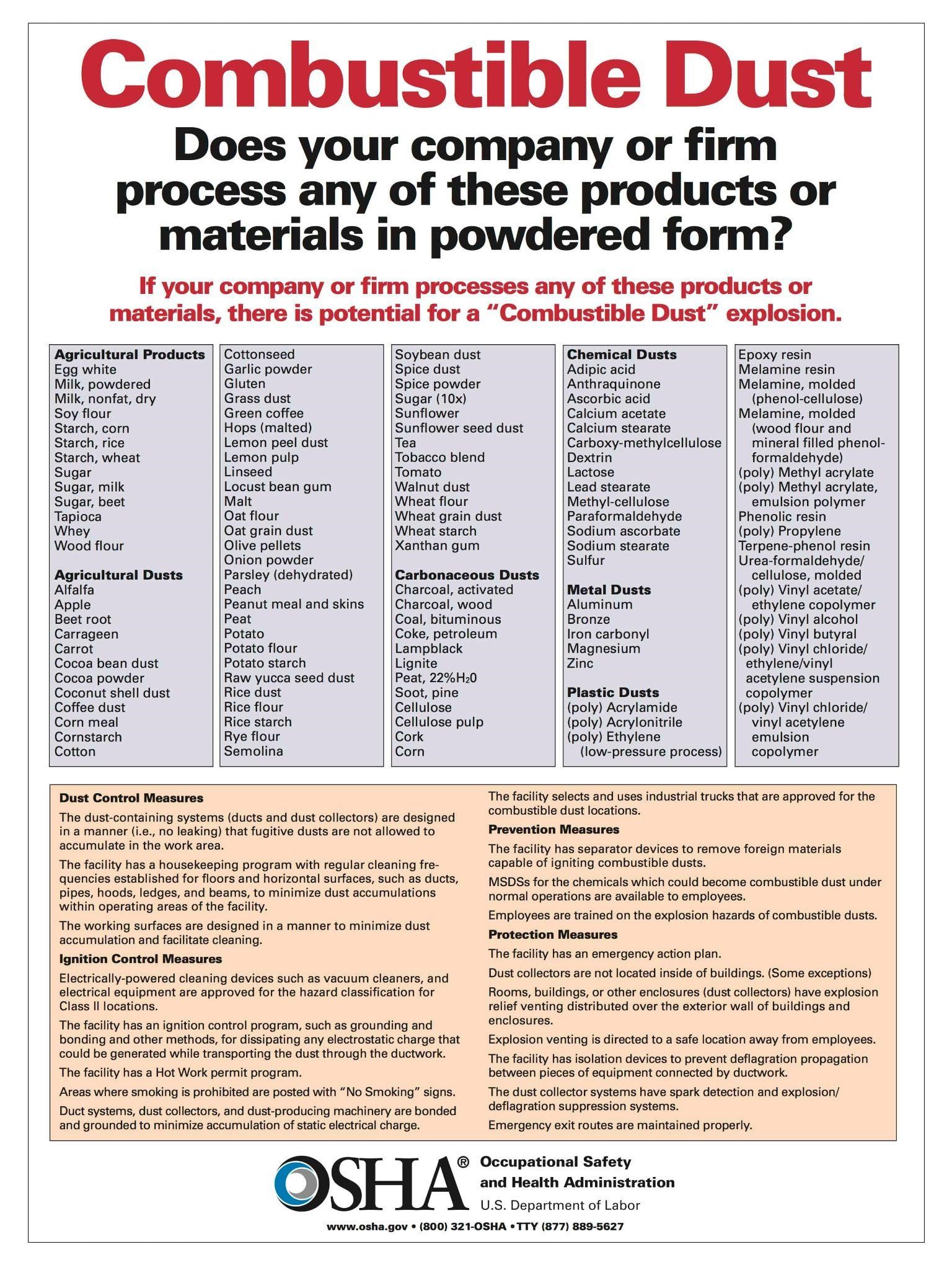Published August 12, 2024, Authored by Dr. Chris Cloney and Jon Barrett of Dust Safety Science

A picture of Concrete Dust and Coal Dust Exposure, at a Mining Facility
What is Concrete Dust?
Concrete is an essential material in modern construction, valued for its durability and versatility. However, the processes that make concrete effective also lead to the generation of concrete dust—a common but often overlooked hazard on construction sites and Industrial facilities. Concrete dust is a byproduct of concrete processes, such as cutting, grinding, or demolition. Concrete dust prevalence on construction sites and manufacturing facilities is a significant concern for health and safety professionals. Managing concrete dust is not merely about cleanliness; it is critical for protecting people and workers from a range of health issues, including serious respiratory conditions.
Concrete dust is fine particulate matter that becomes airborne during the handling and processing of concrete. Composed mainly of silica, producing respirable crystalline silica dust, it also contains various minerals and additives used in concrete mixes. When concrete is cut, ground, or demolished, the dust generated can be both visible and invisible, affecting not only the immediate work area but also the surrounding environment and the public.
Common Sources of Concrete Dust
The primary sources of concrete dust include:
- Cutting and Grinding: Tools such as saws and grinders generate significant amounts of dust when cutting through or finishing concrete surfaces.
- Demolition Activities: Breaking up old concrete structures releases dust into the air.
- Polishing and Surface Preparation: Smoothing and preparing concrete surfaces for finishing can create dust, especially when dry methods are used.
- Concrete Mixing: The process of mixing dry concrete can produce airborne dust.
Some Common Causes of Concrete Dusting Include:
- Weak Surface Layers: This can be caused by using the wrong type or amount of cement, improper finishing techniques, or an overly wet mix.
- Too Much Water: When there’s too much water in the mix, cement powder and other fine particles can rise to the surface, creating dust.
- Poor Concrete Mix Design: This can include using dirty or tarnished aggregates, or too much silt or clay in the mixture.
- Insufficient Curing: The concrete surface may not have been cured properly.
- Release Agents: If too much release agent is applied, the excess oil can make the surface porous.
Health Risks Associated with Concrete Dust Exposure
Exposure to concrete dust poses several health risks, both in the short and long term:
- Short-term Health Effects: These include respiratory irritation, coughing, sneezing, and eye discomfort. Workers may experience a temporary increase in respiratory symptoms when exposed to high dust levels.
- Long-term Health Effects: Chronic exposure can lead to more severe health issues, such as chronic obstructive pulmonary disease (COPD), silicosis (a form of lung disease caused by inhaling fine silica dust), and lung cancer. The fine particles in concrete dust can penetrate deep into the lungs, causing persistent inflammation and scarring.
Regulatory Standards for Concrete Dust
Overview of OSHA and ASTM Regulations
The Occupational Safety and Health Administration (OSHA) has established standards for managing airborne contaminants, including concrete dust:
- OSHA Standards for Permissible Exposure Limits (PEL): OSHA’s permissible exposure limit for respirable crystalline silica, a major component of concrete dust, is 50 micrograms per cubic meter of air (µg/m³) over an 8-hour workday. This standard aims to minimize health risks associated with silica exposure.
- Regulations Specific to Construction and Demolition Sites: OSHA’s Construction Standard for Respirable Crystalline Silica (29 CFR 1926.1153) outlines specific requirements for controlling silica dust in construction activities, including engineering controls, work practices, and personal protective equipment (PPE).
- ASTM-E2625: Standard Practice for Controlling Occupational Exposure to Respirable Crystalline Silica for Construction and Demolition Activities
Global Standards and Comparisons
Different countries have varying regulations regarding concrete dust:
- European Union: The EU has established more stringent standards for dust exposure, including lower permissible exposure limits and more comprehensive dust control requirements.
- Australia: Australia’s regulations are similar to those in the US but include additional requirements for dust monitoring and health surveillance.
- Canada: Canadian standards align closely with OSHA, though provinces may have additional requirements for construction sites.
 A picture of the OSHA Combustible Dust Poster, and Materials that Create Dust in a Manufacturing Facilities
A picture of the OSHA Combustible Dust Poster, and Materials that Create Dust in a Manufacturing Facilities
Hybrid Mixtures and Combustible Dust Explosion Hazards
Industries handling combustible dust, and possible hybrid mixtures, such as mining, concrete, and cement, face unique challenges. Combustible dust refers to finely divided solid particles that are prone to ignition when suspended in the air. These particles can originate from various materials and industries, including agriculture, manufacturing, and chemical processing.
Several dust explosion hazards can arise in the concrete and cement manufacturing industry. Coal is often the main fuel source used to heat the cement kiln. Coal pulverizers are required to grind the coal from the bulk storage size to a smaller particle diameter to use in the kiln.
Coal pulverizers significantly reduce the mean particle size of the coal, drastically increasing the fire/explosion hazard risk. This risk is present inside the pulverizing equipment and during transport to the kiln for burning.
Best Practices for Dust Management
Dust Suppression Techniques
According to the United States Environmental Protection Agency, (E.P.A.), dust control measures apply to any construction site where major soil disturbances or heavy equipment construction activities—such as clearing, excavation, demolition, or excessive vehicle traffic—occur.
Effective dust control is essential for minimizing exposure and maintaining a safe work environment. Key dust suppression techniques include:
- Wet Cutting Methods: Using water to cool cutting tools reduces dust generation significantly. Wet cutting methods involve applying a continuous stream of water to the cutting area, which helps to trap and contain dust.
- On-Tool Extraction: Installing dust extraction systems on cutting or grinding tools captures dust at the source. These systems use vacuum attachments to remove dust as it is generated, preventing it from becoming airborne.
- Water spraying systems and water trucks represent one of the primary methods for controlling combustible dust by binding particles together and reducing their flammability.
- Advanced techniques such as atomization and misting, (spray a fine mist of water and surface active agents to capture airborne dust particles and small airborne particles), and bring them to the ground. This will enhance the effectiveness of water-based dust control, ensuring water barriers thorough coverage, and saturation of dust-laden surfaces.
Personal Protective Equipment (PPE) for Dust Exposure
Proper use of PPE is critical for protecting workers from dust exposure:
- Types of PPE Recommended: Respirators with HEPA filters, dust masks, and goggles are essential for protecting the respiratory system and eyes from dust. Depending on the level of exposure, different types of respirators may be required, including those with P100 filters or full-face respirators.
- Maintenance and Proper Usage: PPE should be regularly inspected and maintained to ensure effectiveness. Workers must be trained in the correct use and fit of PPE, and equipment should be replaced if damaged or worn.
Innovative Technologies in Dust Control
Advanced Dust Suppression Systems
Recent advancements in technology have introduced more effective dust control solutions:
- Latest Tools and Machinery: Modern construction tools and machinery are designed with built-in dust control features, such as integrated vacuum systems and automatic dust suppression mechanisms.
- Benefits of Using HEPA Filters and Automatic Shroud Systems: HEPA filters capture fine dust particles with high efficiency, while automatic shroud systems ensure consistent dust collection. These innovations help maintain cleaner work environments and reduce the risk of respiratory issues.
Software, Monitoring, and Artificial Intelligence Tools
Technological advancements also extend to dust monitoring and management:
- Use of Environmental Monitoring Systems: Real-time monitoring systems can track dust levels in the work environment, providing valuable data for adjusting dust control measures and ensuring compliance with regulatory standards.
- Software Solutions for Real-Time Monitoring and Compliance: Specialized software can analyze dust data, generate reports, and provide alerts when dust levels exceed safe limits. These tools help construction managers make informed decisions about dust control strategies.
- Integrating AI and Automation Technologies: Integrating AI and automation into concrete dust exposure represents a significant advancement in enhancing safety and efficiency. These technologies can streamline the concrete dust exposure process by automating routine tasks, such as data collection and deviation analysis, allowing teams to focus on more complex decision-making.
- AI Algorithms and Analysis: AI can analyze large volumes of operational data to identify patterns and predict potential hazards that might be overlooked in traditional studies. Furthermore, automation can facilitate real-time monitoring of processes, enabling the early detection of deviations and swift implementation of corrective measures. By incorporating AI and automation into concrete dust exposure management, industries can achieve a more dynamic and responsive approach to risk management, ultimately leading to safer and more reliable operations.
Implementing a Dust Management Plan
Creating a comprehensive dust management plan involves several key steps:
- Assessment of Dust Generation and Exposure Points: Identify areas where dust is likely to be generated and assess potential exposure points. This includes evaluating the types of construction activities and tools used.
- Strategies for Regular Maintenance and Dust Control Measures: Implement dust control measures such as regular cleaning, maintenance of dust suppression equipment, and use of effective PPE. Establish procedures for monitoring dust levels and adjusting control measures as needed.
Concrete Dust Control Training and Education
Proper training and ongoing education are vital for effective dust management:
- Importance of Training for Workers: Workers must be trained on the hazards associated with concrete dust, proper use of dust control equipment, and best practices for minimizing exposure. Regular training helps ensure that all workers understand the importance of dust control and are equipped to follow safety protocols.
- Resources for Ongoing Education and Training Programs: Utilize resources such as industry associations, safety organizations, and online training modules to keep workers informed about the latest dust control techniques and regulatory updates.
Conclusion
Managing concrete dust exposure is a crucial aspect of maintaining a safe and healthy construction environment. Understanding the composition and health risks of concrete dust, adhering to regulatory standards, and implementing effective dust control practices are essential for protecting workers. With advancements in technology and a proactive approach to dust management, mining, construction sites, and manufacturing facilities, can mitigate the risks associated with concrete dust and ensure a safer work environment for all. Ongoing vigilance and adaptation of new technologies will continue to play a key role in achieving effective dust control and safeguarding worker health.
About Dust Safety Science
Dr. Chris Cloney, of Dust Safety Science, provides additional information on Silica Dust and MSHA Changes, with a Podcast. Click on the latest Podcast Link: Upcoming MSHA Changes For Respiratory Silica Dust Exposure

A picture of Dr. Chris Cloney, an Expert on Combustible Dust Hazard Analysis
Resources:
Visit Dust Safety Science (Global Incident Tracking)
Visit Dust Safety Academy (Resources, Training, and Events)
Visit Dust Safety Professionals (Need Help? Get Support Today!)
Visit Dust Safety Journal for the Complimentary, Dust Safety Science Monthly Journal
Subscribe to our Complimentary, Dust Safety Science Newsletter at Dust Safety Science Newsletter
Visit the Dust Safety Science blog for written articles on combustible dust safety including the latest research, expert opinions, and state-of-the-art fire and explosion protection.
